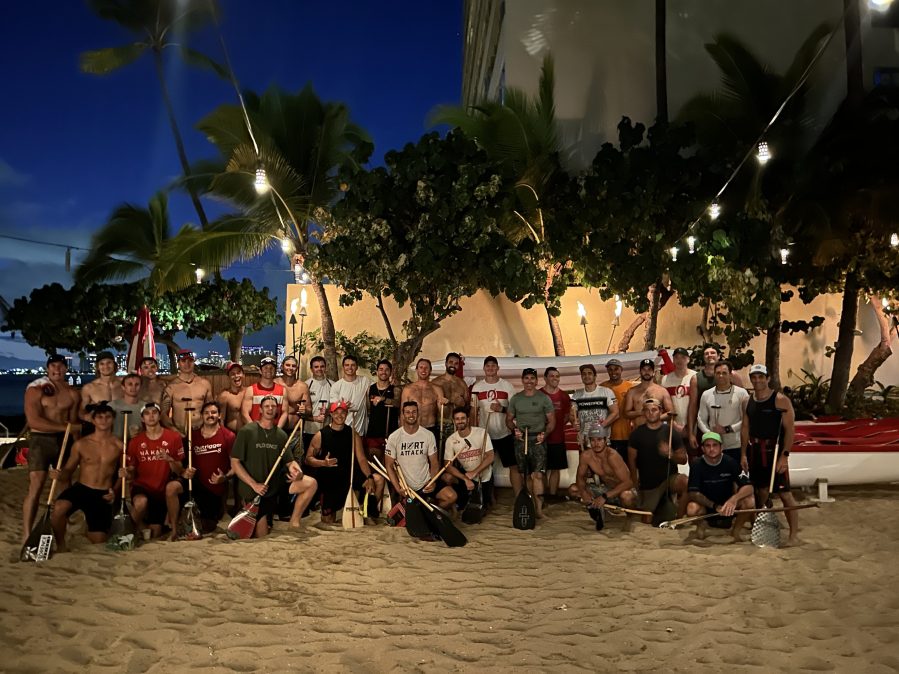HONOLULU (KHON2) — The Molokaʻi Hoe is one of the world’s most prestigious outrigger canoe races from Molokaʻi to O’ahu. This coveted competition all began in the 1950s because Albert “Toots” Minvielle asked, “Why not?”
Almost 75 years later, the men of Outrigger Canoe Club — who find great honor and responsibility in paying homage to the man from their club who started it all — are getting ready for the upcoming Molokaʻi Hoe World Championship.
Toots had a vision to revive inter-island canoe racing and saw no better course than one of the world’s most treacherous, unpredictable bodies of water, the Kaʻiwi Channel.
In 1949, Toots went to the Outrigger Board of Directors to pitch his idea — which was deemed “too dangerous” to be done — but he didn’t give up. By 1952, he had gathered enough crews and sponsors to bring his vision to life.
“Outrigger is one of the oldest clubs on Oʻahu in terms of competitive outrigger canoe paddling. It’s a club that has had a lot of success in the past, so you always have that on your shoulders; people expect Outrigger to do well,” Jack Seymour, paddler from OCC, said.
The Molokaʻi Hoe came to a halt due to the pandemic, followed by the tragic Maui wildfires. Last year, the race and OCC made a triumphant return. An OCC crew racing in the Leilani koa canoe placed first in their division.
“I mean, knowing how many years, how many people have been using that canoe across the Channel, using it in regattas and all kinds of different races for the past 100 years… It’s been in Outriggers’ hands, I believe that whole time,” Seymour said. “You really feel that connection, knowing how many bodies have propelled that [canoe] across the ocean, it’s just so cool to have the history there.”

This year, Jack Seymour and his crew will be conquering the Channel in a fiberglass canoe. And who can these paddlers thank for the fast and furious canoe? None other than Toots himself, who designed the first known fiberglass canoe and launched it from OCC in 1954.
“It’s a little different paddling a koa versus a glass because you know the overall weight is pretty similar, but it’s a bit of a different feeling. The koas don’t float quite as much. It’s a little bit less responsive. So overall, you know that the glass boats are typically a little faster and just a more updated shape.”
The outrigger canoe, or waʻa in Hawaiian, is more than just a vessel in Hawaiian canoe culture; it’s a living entity. The place where the crew’s chemistry comes alive and every synchronous stroke shared is sacred.
“We’re pretty close and it definitely helps when you get in the canoe with a bunch of guys who you enjoy spending time with,” Seymour said. “Even guys who weren’t in our crew last year, we’ve all paddled together in the past and other crews, so we’re all pretty bonded and we’re all good friends on and off the water.”

During an ocean voyage, like the Moloka’i Hoe — where the terrain is unpredictable and the stakes are high, your crew becomes your lifeline. These men have established a bond that can only be made through those experiences shared inside a canoe.
“Every time we hit the water, we want to do as well as we can,” Seymour said. “And, to represent Outrigger, I mean, it’s a great community. It’s a great place to train out of, to spend time with friends and family and it’s a big part of all of our lives.”

Watch the legacy live on during the live broadcast of the Molokaʻi Hoe World Championship starting 7:30 a.m., Oct. 12, airing on KHII, KHON2.com, KHON2’s YouTube and KHON+.
